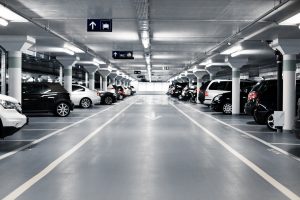Is traditional on-street parking on the way out?
Since the onset of the pandemic in early 2020, cities across the world have needed to drastically reduce on-street parking to facilitate social distancing.
This shift could be temporary, but some experts have weighed in to suggest it could be a catalyst for a global shift away from on-street parking.
MIT Professor Eran Ben-Joseph estimates there are 800 million surface parking spaces in the United States, covering up to one-third of downtown land area in some US cities.
There is a growing movement in New York City to re-establish the once-scenic nature park medians in the middle of Park Avenue into green, fashionable places to take a stroll.
What does this mean for parking? As cities contemplate expanding the medians to incorporate chairs and benches, so a significant portion of street parking real estate will be removed. Cities furthermore consider reducing traffic lanes in favour of more sustainable modes of travel such as bike lanes and footpaths.
This presents a unique opportunity for many densely populated cities.
For so long as on-street parking remains available and accessible, drivers will continue to use it. However, if city councils and entrepreneurs forgo on-street parking, they could push other more sustainable alternatives. Optimising the usage of both private and municipal garages is a good place to start.
So which technologies should be at the forefront of replacing on-street parking? And what has 2020 taught us about the challenges of reducing our on-street parking capacity?
A notable drawback of off-street parking, generally situated deep in underground parking basements and garages, is the limited mobile receptivity and stark lack of Wi-Fi. This presents a problem for many of the emerging innovative parking scheduling applications that help users secure a parking bay just for themselves, as well as for administrators who enjoy being able to access their parking data such as bay occupancy in real-time. In short, the trajectory of new parking technologies are resistant to off-street, underground parking because they often cannot access the connectivity necessary to truly optimise parking utilisation there.
However, this problem too can be solved with technology.
For instance, by coupling our SmartzBollards with a phone app, one can still activate convenient reserved parking solutions such as automated bollards for parking bay bookers. This is because we utilise new, innovative technology that uses your smartphone just like a remote control, to lower or raise our smart parking bollards as you want to drive into your designated parking spot, via a system that operates entirely independent to Wi-Fi.
Book the time and day you want to use a specific parking spot for your visitors, customers or tenants. You just ask the admin, whether it’s the strata manager, building manager or your concierge, to grant you access as a resident, tenant, employee or special visitor.
And there’s no limit on the number of people you can share access to your parking spot that is securely reserved with your SmartzBollard.
With a free app, a visitor can just register their mobile number, request sharing access for a pre-specified day or time window, and then the admin can switch that sharing access on for them. Simple.

The technology we use is built into every smartphone – and we have designed our smart parking bollards to be especially suited to off-street parking, in those situations where mobile reception and Wi-Fi cut out.
Our Bluetooth technology is able to connect in challenging locations where Wi-Fi and mobile connectivity fall deaf.
By securely reserving each individual parking spot with a smart parking bollard, you can be assured that your reserved parking spot is ready and waiting just for you when you need it. And this means that underground, off-street parking need not suffer a disadvantage to its on-street counterpart. Helping ease local councils’ decision to restrict parking to underground locations, and ensure more sustainable options such as walking and bicycling receive get to see the light of day.


Recent Comments